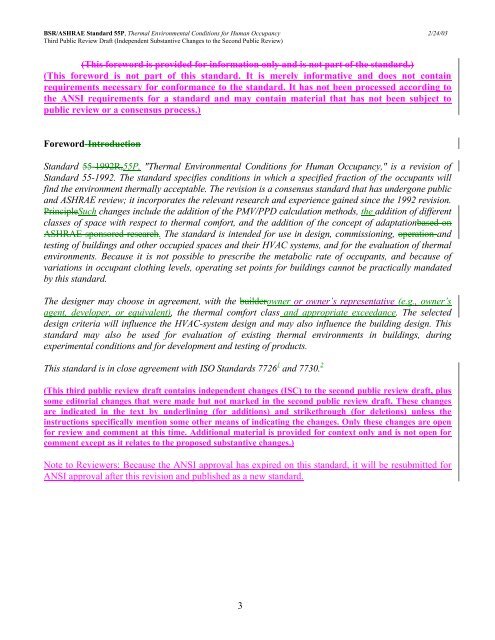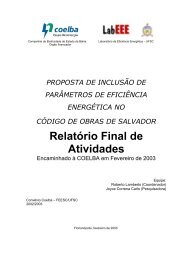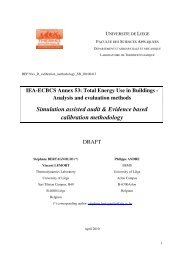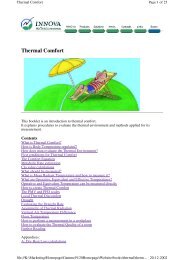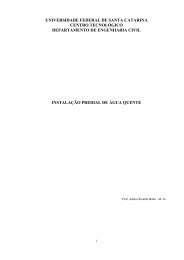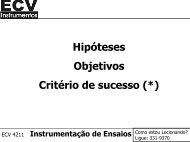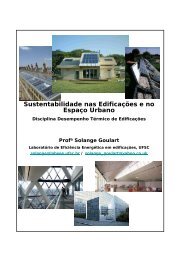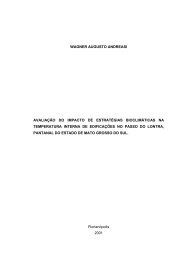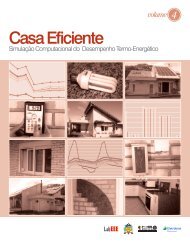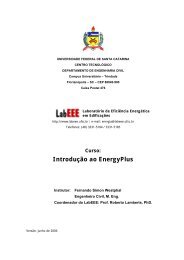ASHRAE STANDARD - 55R
ASHRAE STANDARD - 55R
ASHRAE STANDARD - 55R
You also want an ePaper? Increase the reach of your titles
YUMPU automatically turns print PDFs into web optimized ePapers that Google loves.
BSR/<strong>ASHRAE</strong> Standard 55P, Thermal Environmental Conditions for Human Occupancy 2/24/03<br />
Third Public Review Draft (Independent Substantive Changes to the Second Public Review)<br />
(This foreword is provided for information only and is not part of the standard.)<br />
(This foreword is not part of this standard. It is merely informative and does not contain<br />
requirements necessary for conformance to the standard. It has not been processed according to<br />
the ANSI requirements for a standard and may contain material that has not been subject to<br />
public review or a consensus process.)<br />
Foreword-Introduction<br />
Standard 55-1992R,55P, "Thermal Environmental Conditions for Human Occupancy," is a revision of<br />
Standard 55-1992. The standard specifies conditions in which a specified fraction of the occupants will<br />
find the environment thermally acceptable. The revision is a consensus standard that has undergone public<br />
and <strong>ASHRAE</strong> review; it incorporates the relevant research and experience gained since the 1992 revision.<br />
PrincipleSuch changes include the addition of the PMV/PPD calculation methods, the addition of different<br />
classes of space with respect to thermal comfort, and the addition of the concept of adaptationbased on<br />
<strong>ASHRAE</strong> sponsored research. The standard is intended for use in design, commissioning, operation and<br />
testing of buildings and other occupied spaces and their HVAC systems, and for the evaluation of thermal<br />
environments. Because it is not possible to prescribe the metabolic rate of occupants, and because of<br />
variations in occupant clothing levels, operating set points for buildings cannot be practically mandated<br />
by this standard.<br />
The designer may choose in agreement, with the builderowner or owner’s representative (e.g., owner’s<br />
agent, developer, or equivalent), the thermal comfort class and appropriate exceedance. The selected<br />
design criteria will influence the HVAC-system design and may also influence the building design. This<br />
standard may also be used for evaluation of existing thermal environments in buildings, during<br />
experimental conditions and for development and testing of products.<br />
This standard is in close agreement with ISO Standards 7726 1 and 7730. 2<br />
(This third public review draft contains independent changes (ISC) to the second public review draft, plus<br />
some editorial changes that were made but not marked in the second public review draft. These changes<br />
are indicated in the text by underlining (for additions) and strikethrough (for deletions) unless the<br />
instructions specifically mention some other means of indicating the changes. Only these changes are open<br />
for review and comment at this time. Additional material is provided for context only and is not open for<br />
comment except as it relates to the proposed substantive changes.)<br />
Note to Reviewers: Because the ANSI approval has expired on this standard, it will be resubmitted for<br />
ANSI approval after this revision and published as a new standard.<br />
3


